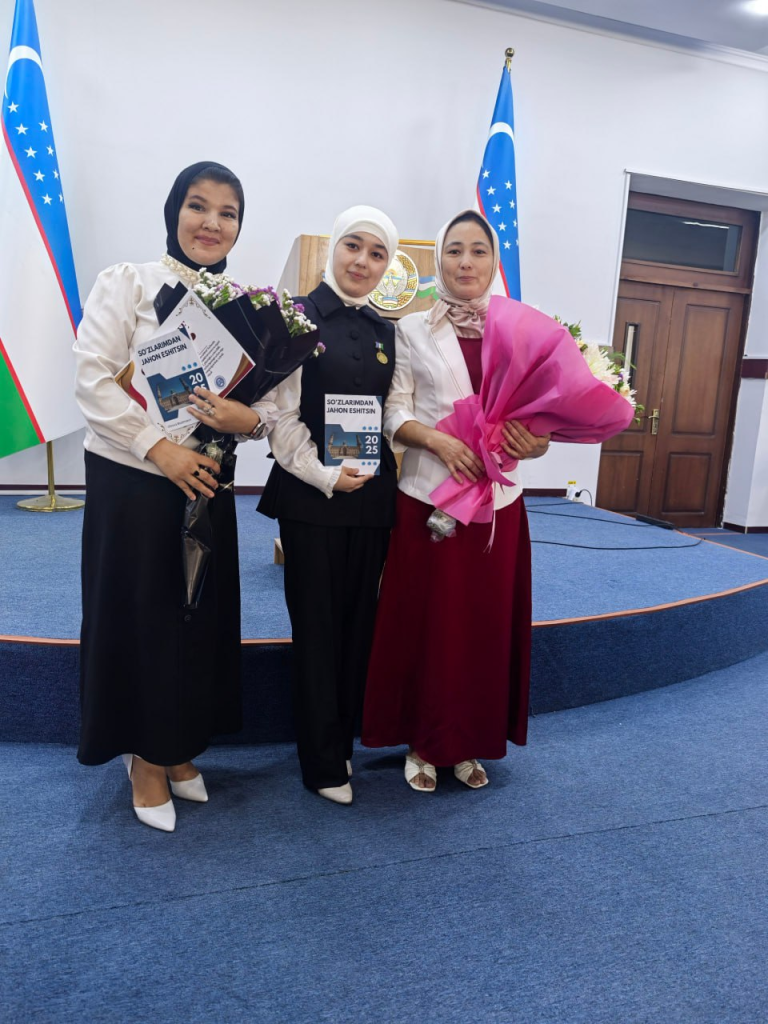
PROBLEMS ARISING IN THE PROCESS OF DIGITAL TRANSFORMATION AND STRATEGIES FOR THEIR SOLUTION
Olimova Muslima Odiljon qizi
Andijan State Institute of Mechanical Engineering,
Faculty of Intelligent Control and Computer Systems,
Student of the Information Systems and Technologies Department
Abstract:
This scientific thesis explores strategies for addressing problems in the process of digital transformation.
Keywords: Global economy, transformation, ecosystems, internet, platforms.
Digital transformation is a key theme in the global economy, yet what it truly means for established companies continues to puzzle both academics and practitioners. Here, we identify three main tensions at the core of digital transformation—products, platforms, firms, ecosystems, people, tools—and describe their underlying economics, driving forces, and counterforces. These tensions help frame the strategic alternatives for global companies. Overall, we argue that digital transformation is not an objective state but a strategic choice among various options made by leaders.
Digital transformation has become a vital topic of global strategy as born-digital firms like Google, Booking.com, Alibaba, and Amazon—as well as billion-dollar startups like Uber, Pinduoduo, Airbnb, and TikTok—have dominated collective imagination. Many of these digital reinventions of traditional industries, which often resist global boundaries, have led to the widespread belief that “digital transformation changes everything.” Officials are warned: “Disrupt or be disrupted.” This has led some to believe that digital transformation is establishing an entirely new world order. More data, connectivity, and digital intelligence are expected to eliminate global boundaries and reinforce new industrial frameworks.
However, a closer look at established firms undergoing digital transformation reveals a more complex story. For instance, Danish shipping company Maersk uses blockchain not to reinvent itself, but to perform its existing job—delivering goods more efficiently worldwide. Dutch beverage company Heineken uses digital transformation to better interact with customers, create products, and compete, yet still brews beer and delivers it by truck (Furr, Garlandt, and Shipilov, 2021). Even in digitally dominant industries such as media and travel, traditional firms continue to coexist—and even thrive—alongside digital disruptors: for example, The New York Times and Huffington Post continue to coexist.
Today’s rapid technological advancement is revolutionizing the work environment across all sectors. Even traditional organizations are experimenting with cloud analytics, human digital connectivity, sensor technology, and smart devices. This digital transformation compels companies to rethink not only their technology use but also their core models for creating and capturing value.
Shifting to digital, platform-based business models is often not easy, as it introduces a host of challenges that may be entirely new to many corporations. This research aims to understand the digital transformation process in traditional industry settings through a single qualitative case study. It focuses particularly on the challenges an organization might face during digital transformation and the digital strategies that can be employed to advance and benefit from it.
This study offers two theoretical contributions:
- A new foundation for understanding the problems of digital transformation
- A detailed description of the digital transformation process and the different management tools applied at various stages of the transformation
These contributions are also practically significant, as they can be used to assess and plan digital transformation processes. The empirical findings of this study suggest that current digital strategy literature may focus excessively on individual transformative digital initiatives, often overlooking the importance of digitizing traditional business processes to build a solid foundation for digital innovation.
Furthermore, existing literature places heavy emphasis on internal change problems, whereas in real-world cases, the most significant and challenging issues lie within the organization’s rigid institutional environment.
References:
- Farkhod Mulaydinov. Digital Economy Is A Guarantee Of Government And Society Development. Ilkogretim Online, 2021; 20(3): 144–1479.
- Yuldashev U.A. Use of Video Lesson Creative Technologies in the Process of Electronic Education. Scientific-Methodical Journal – T 2021.
- Saidov Jasur Doniyor o‘g‘li, Saydullo Payzievich Allayorov, Said Xalilovich Islikov. Criteria for Assessing Professional Competence in Creating Databases. Scientific Progress. 2021. №1. URL: Andijan 2024.
https://cyberleninka.ru/article/n/ma’lumotlar-omborini-yaratish-bo’yicha-kasbiy-kompetentligini-baholash-mezonlari (Accessed: 02.06.2022). - http://tsue.uz/uz/raqamli-iqtisodiyot-yangi-ozbekiston-taraqqiyotining-yangi-davri/
- Abdullayev M., Saidahror G., & Ayupov R. (2020). Digital Economy – A Pressing Direction in Personnel Training. Archive of Scientific Research, 1(23).
Born on August 7, 2007, she is a student at Andijan State Institute of Engineering in the Faculty of “Intelligent Control and Computer Systems,” majoring in Information Systems and Technologies. Despite her young age, she is a talented programmer, writer, and youth leader who has achieved numerous accomplishments.
She is the founder of Muslima Academy, through which she leads thousands of young people toward knowledge, technology, and global opportunities. As the Uzbekistan ambassador of the Wakelet community, she actively contributes to the development of international scientific cooperation.
As a result of her academic research, she is the author of numerous articles, theses, and books. Her works are currently sold in over 30 countries, and she has signed international contracts with several foreign publishing houses. She has made a significant impact on the development of more than 1,000 young people.

Pingback: Synchronized Chaos Mid-August Issue: Layers Upon Layers | SYNCHRONIZED CHAOS